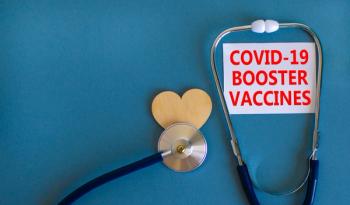
How Tech Can Play Part in Overcoming the Healthcare, Medical Supply Chain Issues Caused by COVID-19
"Given the supply chain constraints that companies are struggling with, the ability to better manage forecasting, demand, and create a redundancy network by allowing for increased visibility into inventory is essential,” recalls Naama Stauber Breckler, CEO of Better Health.
Most can recall the vast demands of PPE, gloves, and other medical products needed at the beginning of the pandemic, which soon caused heightened shortages that we’re still seeing today.
Naama Stauber Breckler, CEO of Better Health, recalls majority of the country and world were homebound at a time and society’s reliance on care and supplies were more through online retail and home delivery. With quicker access to these supplies, shortages were more prone to happen.
However, Stauber Breckler said there are ways to face these challenges in the medical supply chain.
For example, building in redundancy has been essential in facing these shortages. Many organizations like Better Health have worked to overcome backorders and shortages by creating a highly redundant network of distributors. Better Health also has access to over 40 warehouses across the country. When onboarding new customers, Better Health provided viable alternatives in case of further supply issues.
“By having access to thousands of products, and by offering a digital platform, we’re able to service the unique needs of every single member, no matter what they are,” she said.
While creating more access to supplies, technology has adopted a larger role in assisting these challenges.
“Technology plays an incredibly important role in the field of medical supplies,” Stauber Breckler said. “Given the supply chain constraints that companies are struggling with, the ability to better manage forecasting, demand, and create a redundancy network by allowing for increased visibility into inventory is essential.”
In addition, being able to offer customers an easy-to-use digital platform enables them to learn about and choose products that best meet their needs, she said. For example, when it comes to urology or ostomy supplies — organizations like Better Health have seen that patients are forced to sift through thousands of product options with little-to-no guidance. This process only reinforces the already overwhelming experience of readjusting to life with a chronic condition.
Stauber Breckler added e-commerce creates a new modality by which patients can engage and take control of their own health care. By providing an end-to-end care system that includes education and support, e-commerce is able to bridge different datasets in a way that supports rather than overwhelms a patient.
“We’ve built a cost-estimator tool that can give our members a real-time estimate for the insurance benefits and cost of their care,” she said. “We’ve also leveraged existing manufacturer content and peer-reviewed content at a product level to educate patients. With e-commerce, we’re able to reimagine the journey of getting medical supplies from start to finish from the lens of the patient.”
Other solutions that can contribute to solving the supply challenge, according to Stauber Breckler, are:
- Be transparent and prepare your customers about any shortages that may occur and encourage your customers to select alternatives in advance. For example, a recommendation engine that can offer popular alternatives similar to the products a customer chooses.
- Encourage customers to “bulk order” products whenever possible. Depending on the product category and regulatory requirements, it’s encouraged customers order a three-month supply, avoiding shortages and saving handling time on both ends.
Newsletter
Get the latest industry news, event updates, and more from Managed healthcare Executive.





















































